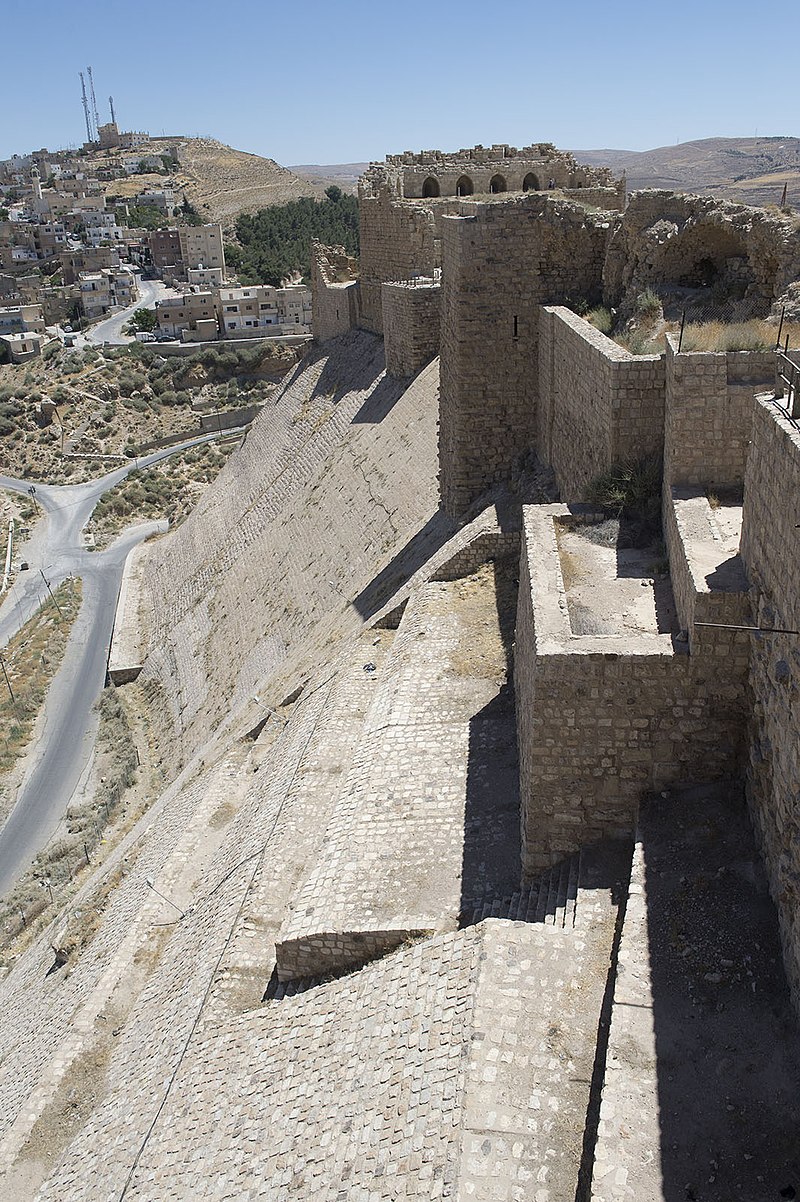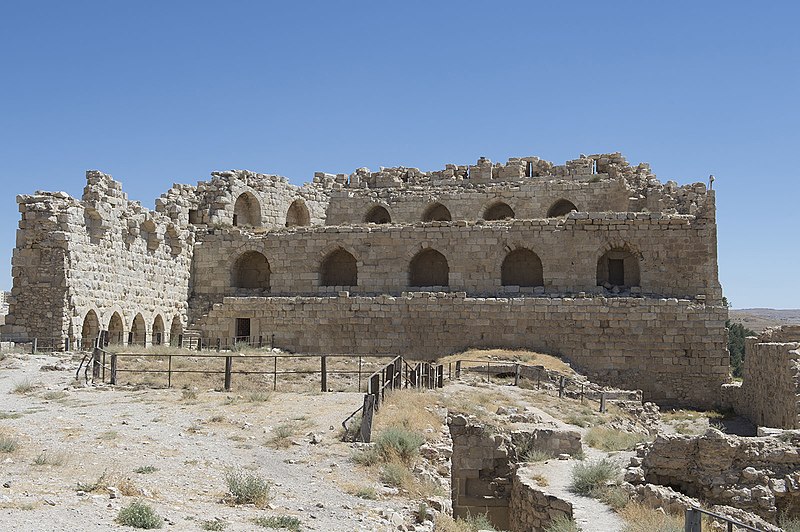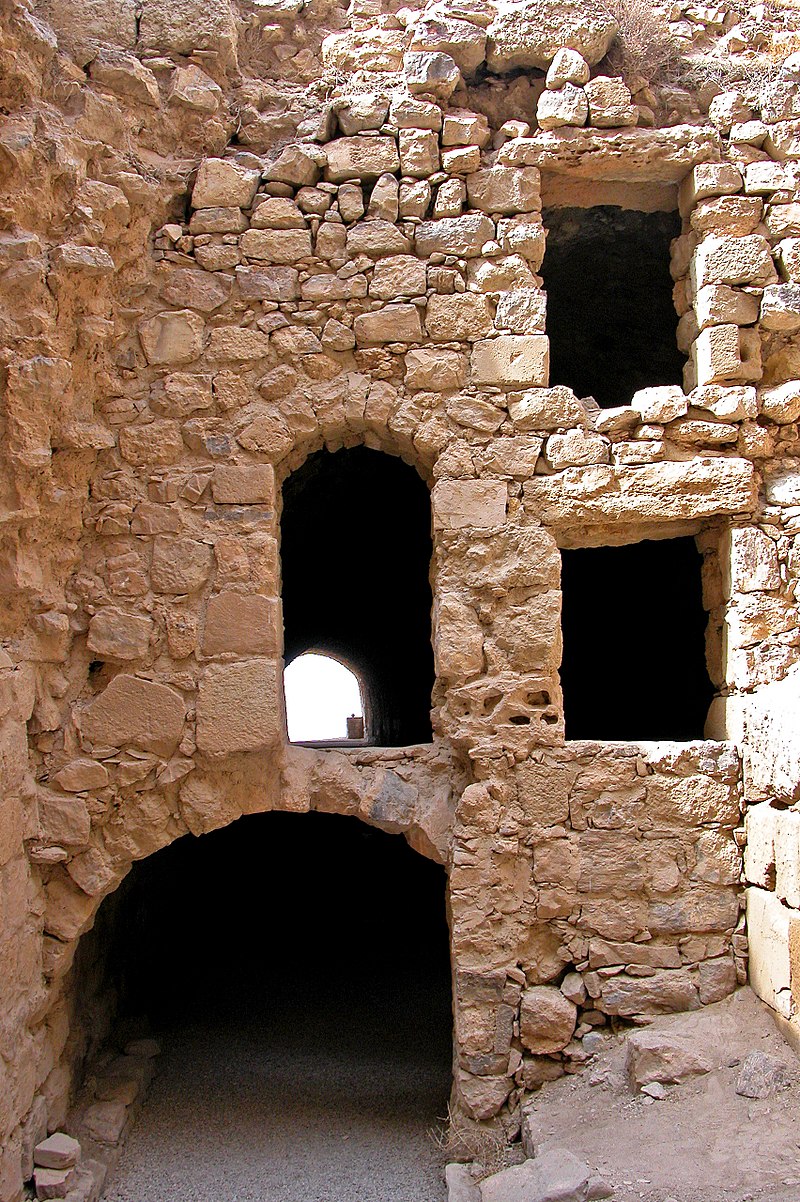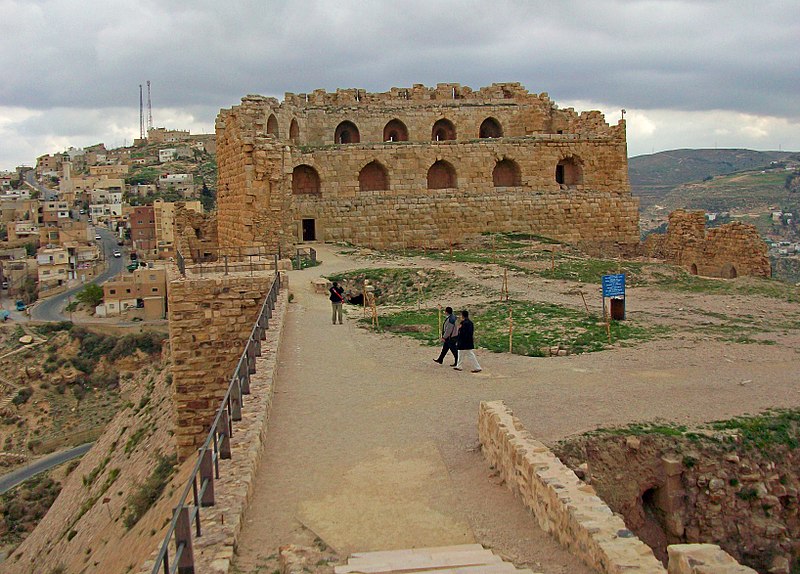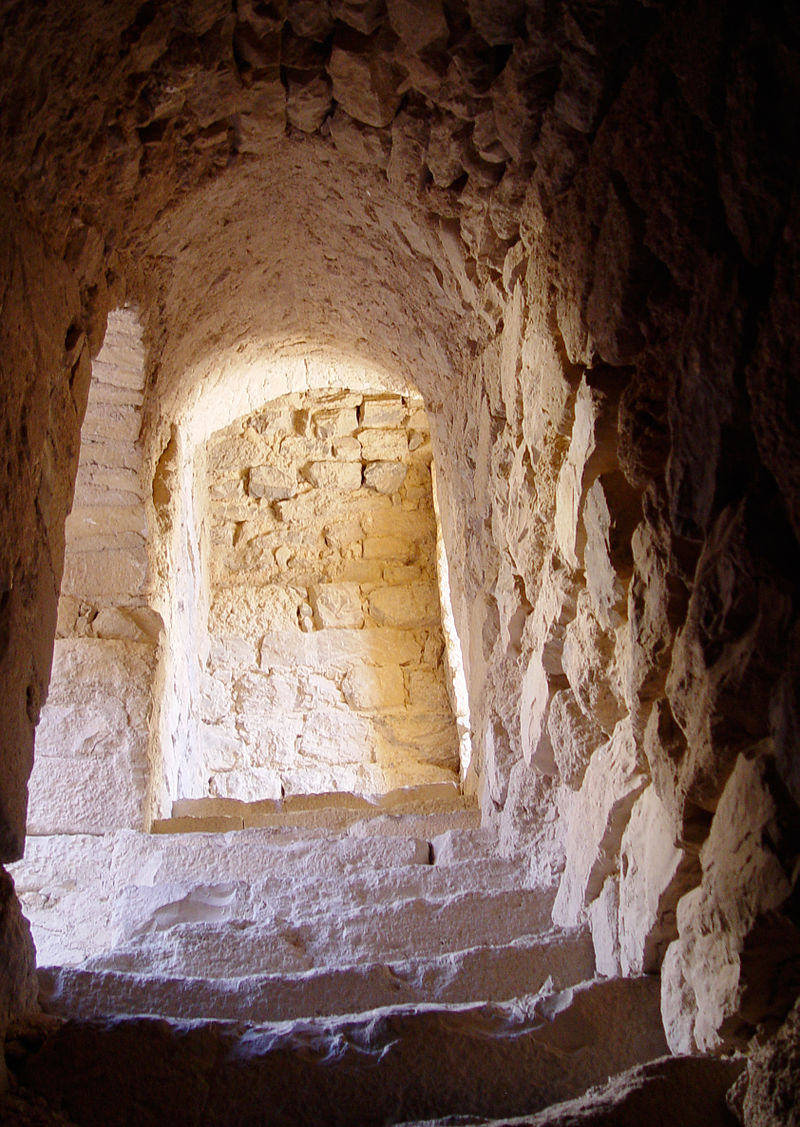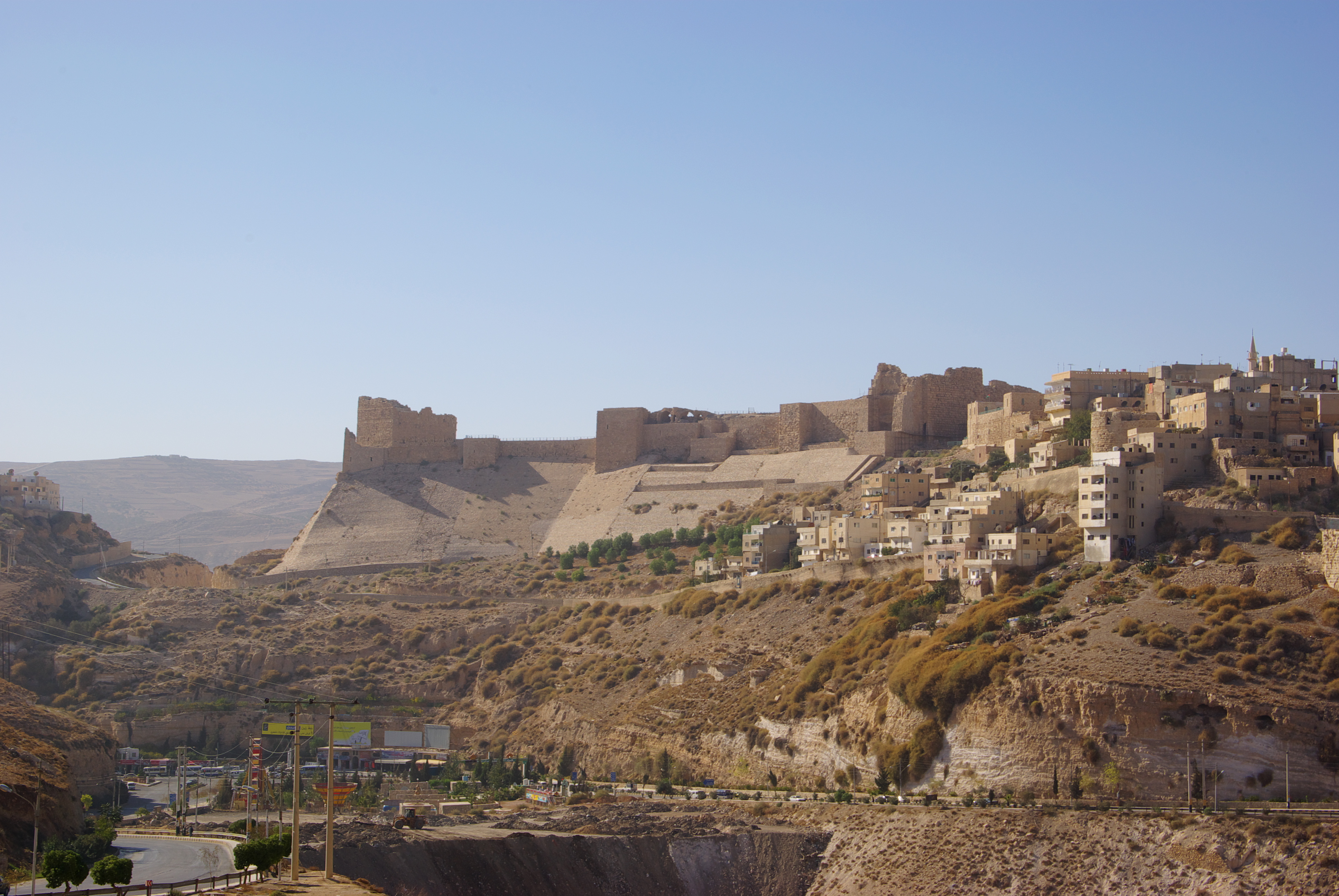Kerak Castle
Pagan was Lord of Oultrejordain and Kerak Castle became the centre of his power, replacing the weaker castle of Montreal to the south. Because of its position east of the Dead Sea, Kerak Castle was able to control bedouin herders as well as the trade routes from Damascus to Egypt and Mecca. His successors, his nephew Maurice and Philip of Milly, added towers and protected the north and south sides with two deep rock-cut ditches the southern ditch also serving as a cistern. The most notable Crusader architectural feature surviving is the north wall, into which are built immense arched halls on two levels. These were used for living quarters and stables, but also served as a fighting gallery overlooking the castle approach and for shelter against missiles from siege engines. In 1176 Raynald of Châtillon gained possession of Kerak Castle after marrying Stephanie of Milly, the widow of Humphrey III of Toron and daughter-in-law of Humphrey II of Toron. From Kerak Castle, Raynald harassed the trade camel trains and even attempted an attack on Mecca itself. In 1183 Saladin besieged the castle in response to Raynald's attacks. The siege took place during the marriage of Humphrey IV of Toron and Isabella I of Jerusalem, and Saladin, after some negotiations and with a chivalrous intent, agreed not to target their chamber while his siege machines attacked the rest of the castle. The siege was eventually relieved by Baldwin IV of Jerusalem. Saladin besieged Kerak again in 1184. Saladin attempted to fill the ditches that prevented siege engines from getting in range of the castle wall. However, just like the first siege of Kerak, Saladin and his men left before a reinforcing crusader army could come to the castle’s aid. This siege only lasted four weeks. The last siege of the 12th century was led by Sa’d Al-Din, Saladin’s nephew, in 1188. Unlike the sieges before it, the Muslim army was not under the threat of crusader reinforcements. The year before Saladin had defeated an outnumbered crusader army at the Battle of Hattin and therefore the crusaders could not gather enough troops to reinforce Kerak.
The Muslim army cut off supplies to the castle, and Kerak surrendered several months after. When the castle had fallen, it is believed that it was due to lack of arms, not a lack of food. With the fall of Kerak, the Castle of Montreal, which had been replaced as the centre of the lordship by Kerak, surrendered soon afterward. In 1263, the Mamluk Sultan, Baibars, enlarged and built a tower on the northwest corner. Under the Ayyubid Dynasty, Kerak served as the Administration centre for all of the regions of Jordan. When Saladin's brother, al Aldil was awarded control of the castle, he made it the site of one of his treasuries. Kerak would continue to serve as the home of a royal treasury for the remainder of the Ayyubid Dynasty. During some internal conflict by members of the Ayyubid Dynasty in the 1230s and 40s, Kerak was one of the three princedoms that was able to remain independent. The castle was retaken by the Egyptian Sultan al- Salih Ayyub in 1249. Kerak was so important to the Ayyubids that it is recorded that only the governors of Kerak and Damascus were allowed to carry their official correspondences on red paper. By 1263, Kerak was under the rule of the Mamluk Sultan Baybars. Under the Mamluks, Kerak continued to remain an important administrative centre. Ibn 'Abd al Zahir stated that the castle held four ministries: the ministry of the army, the ministry of finance, the ministry of Kerak and the chancery. Due to the castles importance, it also maintained a significant military force, which under the rule of al Mughith, contained at least 700 horsemen. Kerak Castle was besieged again in 1834 by a rebel leader of the peasants' revolt in Palestine. In 1840, Ibrahim Pasha of Egypt captured the castle and destroyed much of its fortifications. In 1844, his troops, who did not have control over the surrounding countryside, came under siege. They were eventually starved out and many were killed. During the Ottoman Empire, it played an important role due to its strategic location on the crossroads between the Arabian Peninsula, Egypt and Greater Syria.
